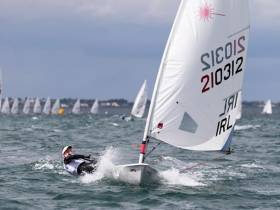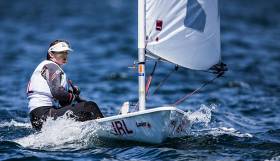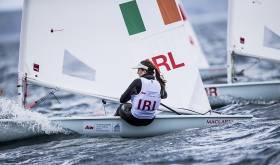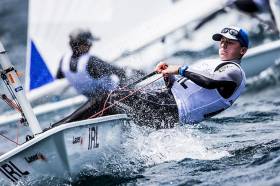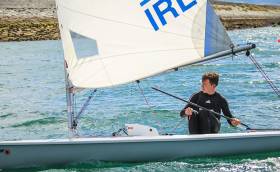Displaying items by tag: Nicole Hemeryck
With a 7th overall in the mega-large fleet at the KBC Laser Worlds in Dun Laoghaire in July followed by December’s 9th overall in World Sailing’s Aon Youth Sailing Worlds in Auckland, Nicole Hemeryck – who turned 18 in December – not only emerged as top Irish girl sailor for 2016, but her results at the December Worlds were ahead of the showing by the Irish boys.
Consistency was the keynote of Hemeryck’s performance in the top class 47-strong Auckland fleet. Never out of the top half, She discarded a 23rd, and though she’d to carry a 22nd and an 18th, her scoreline was otherwise healthy at 6,9,6,9,10 and 9. Obviously she acknowledges there’s room for improvement, but she can take encouragement from the 37 sailors who finished behind her in the overall rankings, as there are many formidable talents among them, with Britain placing 13th, China 14th, USA 15th and Denmark 16th, while host country New Zealand had to be content with 18th.
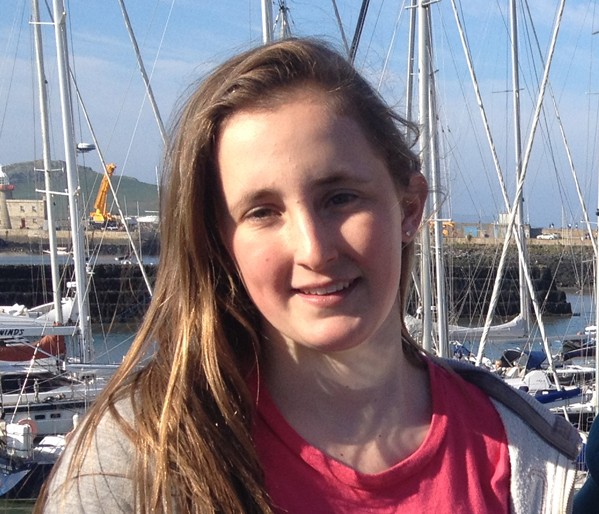 Nicole Hemeryck
Nicole Hemeryck
Irish Sailors Seek Top Ten Finish At Youth Sailing Worlds, New Zealand
Ireland's Youth Laser Radial sailors are aiming for a top ten finish at the Youth Sailing World Championships after eight races races sailed in New Zealand. The National Yacht Club's Nicole Hemeryck is back in the top ten in the Girls Laser Radial fleet after scoring another consistent ninth place in race eight and Royal Cork's Johnny Durcan is up from 18th to 14th in the Boys fleet after a scoring a fourth place in race eight. Full up–to–date results are here.
Gold medals tumbled in Auckland at the 2016 Aon Youth Sailing World Championships as five winners were confirmed with a race to spare. Australia's Finnian Alexander has the boy's Laser Radial in his sights barring a complete final day meltdown and Germany's Hannah Anderssohn takes the initiative in a tight girl's Laser Radial battle.
More than 380 sailors from 65 nations sailing in more than 260 boats across nine disciplines are competing.
The final races are scheduled for 09:55 local time on Tuesday 20 December out of the Torbay Sailing Club.
Irish Youth Sailors Battling Hard in New Zealand, Durcan Hit With Black Flag
Both of Ireland's Youth Laser Radial sailors are battling hard to stay in contention at the Youth Sailing World Championships after six races races sailed in New Zealand. The National Yacht Club's Nicole Hemeryck has dropped three places to eleventh in the Girls Laser Radial fleet and Royal Cork's Johnny Durcan went from 12th to 18th in the Boys fleet after a black flag starting line penalty in race six. Full up–to–date results are here.
In the boys fleet, Australia's Finnian Alexander (a strong performer at the KBC–Radial worlds at the Royal St. George Yacht Club this Summer) took two bullets to open up an 18–point gap back to Denmark's Patrick Doepping and New Zealand's George Gautrey who both have 33 in the boy's Laser Radial. Alexander however will tread with caution in the coming days as he has a disqualification on his scorecard from the very first race of the Youth Worlds. So far, so good for the Aussie sailor since then though.
Sandra Luli (CRO) is still top of the girl's Laser Radial, but Rio 2016 Olympian Dolores Moreira Fraschini (URU) is chasing hard. The Uruguayan took a bullet and a 10th compared to the sixth and discarded 20th Luli scored. The Croatian still leads by two points overall. Germany's Hannah Anderssohn rounds out the podium in third.
Racing continues at the Youth Worlds and is scheduled to begin at 09:55 local time at the Torbay Sailing Club on Monday 19 December.
Laser Sharp Hemeryck Sailing In Top Ten at Youth Worlds
Both of Ireland's Laser Radial sailors are off to a strong start at the at the Youth Sailing World Championships after four races races sailed in New Zealand. The National Yacht Club's Nicole Hemeryck is in the top ten of the Girls Laser Radial fleet Royal Cork's Johnny Durcan is 12th in the Boys fleet. Full results are here.
Hemeryck counts three results in the top ten (6, 9, 7) to be eighth overall in her 48–boat fleet.
It's tight at the top of both Laser Radial fleets as the discard came into play, allowing a chosen few to start forming breakaways from the rest of the field.
Conditions were mixed on the Hauraki Gulf as a light 4-6 knot breeze dialled up later in the day to the mid-teens. The mixed breeze brought mixed results as light wind specialists excelled one minute and suffered the next, and vice versa for the sailors who thrive in strong breeze.
Laser Radial leader Patrick Doepping (DEN) had mixed fortunes. Doepping finished day one with two bullets but in Saturday's racing the Dane fell right to the back of the fleet finishing a lowly 37th, "I think the difference is I am a full rig sailor,” explained Doepping. "I am 80-82 kilos so for me in the light breeze it's very hard to keep the speed. In the strong breeze I don't have the disadvantage I have in the light breeze and that's why I didn't do well today.”
Doepping followed up with a seventh as the conditions fell in his favour enabling him to discard his 37th. Despite a self-proclaimed disappointing day, Doepping remains ahead of the fleet and isn't letting this affect his mentality, "I have been very calm and haven't been in any situations so far. I will keep doing what I've done over the last couple of days and avoid any mistakes.”
Only four points separate the top five and Doepping's discard could play a big role at the end of the week if he does get in to any situations. Doepping will have to keep watch as Great Britain's Daniel Whiteley is ready to pounce, looking to move up from fifth. Whiteley has been sailing near the top of the fleet in every race so far, but it's not good enough, or great enough for the Briton, "It was pretty challenging out there today. I got a sixth in the first race and a 13th in the last race so I'm not too happy, but it leaves me in contention.
"Tomorrow I can go out and do a bit better and climb the leaderboard. I haven't properly messed up yet. I'm consistent and hopefully I can make it consistently great rather than consistently good.”
Whiteley's discarded 13th is better than those around him and that gives him a little breathing space, "Maybe I have a little less pressure, but you can't think like that. We've got another three days, another five races and that's over half the championship so we will have to see how it shapes up.”
Sandwiched between Doepping on top and Whiteley in fifth is George Gautrey (NZL) in second, Dominik Perkovic (CRO) in third and Finnian Alexander (AUS) fourth.
It was Sandra Luli's day in the girl's Laser Radial and the Croatian remains on top. Talking through her day Luli said, "Today it was light winds. Compared to yesterday, tactics and speed was more important as the wind was always changing. In the first race I finished eighth and second race I finished first.”
Luli can discard her eighth place finish which gives her a nice six point cushion over Rio 2016 Olympian Dolores Moreira Fraschini (URU) who discards her 17th and counts her second.
Sitting in third is Germany's Anderssohn who summed up the day for just about every Laser Radial sailor in Auckland, "For me I think it wasn't such a good day. The first race was okay but the second wasn't very good. I think it changed a lot and everyone had a bad race. It was very shifty so you don't know where to go and there was less wind. It was hard conditions.”
Of the day one frontrunners defending champion and Rio 2016 sailor Maria Erdi (HUN) dropped down to fifth after a 15th and a UFD, which she discards.
Erdi came ashore after racing and was left confused about her performance, "There are some pretty good people here, but I just wasn't expecting myself to do this bad in shifty winds.” The Hungarian will have to sail smarter for the rest of the championship to stay in contention.
Durcan & Hemeryck Prepare for Battle At Youth Worlds in New Zealand
Royal Cork's Johnny Durcan and the National Yacht Club's Nicole Hemeryck are ready for battle at the 2016 Aon Youth Sailing World Championships in New Zealand this Friday. Both the Irish sailors will compete in the Laser Radial class which will see the most countries and possibly the most diverse experience levels of all the fleets taking part.
When the racing begins in Auckland on December 16, the Irish sailors will meet time international racers, Youth Olympians and even senior level Olympians.
The girl's fleet will boast three Rio 2016 Olympic competitors who will feel they can push for the podium positions in a competition where sailing as the only country representative is few and far between.
Uruguay's Olympic flagbearer, Dolores Moreira Fraschini and Malaysia's Nur Shazrin Mohamed Latif represented their countries at the summer Games and so did last year's Youth Worlds champion, Hungary's Maria Erdi.
Speaking about her title defence Erdi said, "I'm very excited. I've been waiting for this event all year and it's finally here. I can't wait to see all the people. I was only racing in the open fleet this year and I was missing the youth fleet a lot. It will be also interesting to see how much the girls have improved.”
Some of those girls focussing on improvement are the competitors from the emerging nations like Venezuela's Nicolle Gonzalez and Egypt's Khouloud Mansy who have been getting in some last minute coaching in New Zealand from the World Sailing nominated experts.
Realistic about her chances, Mansy said, "I'm looking forward to it because it's my first time taking part. I know I'm not going to get the best results but I came here to do my best and for the whole experience. Make new friends. The weather. The event as a whole and just gradually improving.”
Gonzalez is taking a different approach and praying for the right conditions to give her a little edge, "I hope that it's not too windy. Ideally I want 5-7 knots and if it is those kinds of conditions I hope to be near the top of the fleet. If not, I just have to do my best and take the experience forward for next year.”
As well as international regatta novices and Olympians, there is also the returning 2015 silver medallist from Germany, Hannah Anderssohn. Anderssohn will resume her dual with champion Erdi from Langkawi, Malaysia last year.
Also in the mix will be Aruba's Odile van Aanholt who holds a Youth Olympic Games (YOG) silver medal in the Byte CII from Nanjing 2014.
There will be a new champion in the boy's section as Australia's Alistair Young is aged out paving the way for New Zealand's George Gautrey and Great Britain's Daniel Whiteley to move up from the respective silver and bronze medals they won in 2015.
As Gautrey and Whiteley return, two sailors either side of the pair in terms of Youth Worlds experience are Guatemala's Matias Rosenberg Callejas and Slovakia's Patrik Melis.
"It's my first Youth Worlds,” said Callejas, "I'm just 14 and hopefully I will have four more Youth Worlds after this and I want to do the best now and then make sure I do better next year. This year is more about experience.”
Returning to the Youth Worlds, Melis is very much excited about the challenge ahead, "Of course I am looking forward to it. It's going to be my third Youth Worlds and I want to improve my results from the last two years. New Zealand is a great place and I'm really going to enjoy it.”
There is also some YOG experience in the boy's fleet with sailors like Teariki Numa (PNG) and Asri Azman (MAS) as well as the Nanjing 2014 Byte CII winner, Bernie Chin from Singapore.
The Laser Radial boys fleet will begin at 10:55 local time on 16 December and the girls fleet begin at 11:10. Both have two races.


























